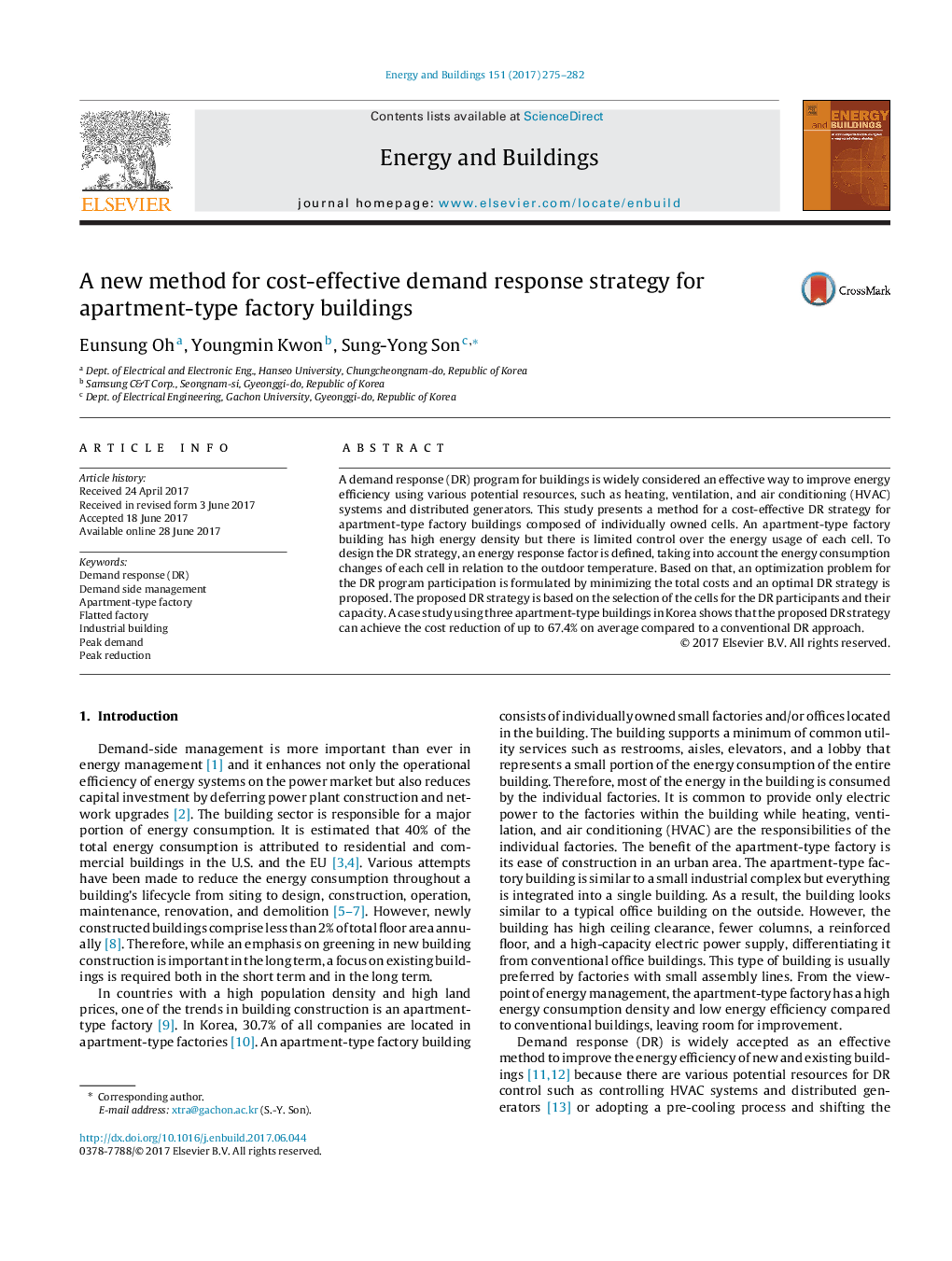| کد مقاله | کد نشریه | سال انتشار | مقاله انگلیسی | نسخه تمام متن |
|---|---|---|---|---|
| 6481084 | 1428939 | 2017 | 8 صفحه PDF | دانلود رایگان |
- A method for a DR strategy for apartment-type factory buildings is proposed to minimize the DR cost.
- The proposed method determines the optimal set of DR participants and the DR capacity of each participant.
- The proposed method does not require detailed information about demand, but operates on the aggregated demand measured for the billing.
- Numerical result using a case study involving three apartment-type buildings in Korea shows the proposed method can achieve the cost reduction of up to 67.4% on average compared to a conventional DR approach.
A demand response (DR) program for buildings is widely considered an effective way to improve energy efficiency using various potential resources, such as heating, ventilation, and air conditioning (HVAC) systems and distributed generators. This study presents a method for a cost-effective DR strategy for apartment-type factory buildings composed of individually owned cells. An apartment-type factory building has high energy density but there is limited control over the energy usage of each cell. To design the DR strategy, an energy response factor is defined, taking into account the energy consumption changes of each cell in relation to the outdoor temperature. Based on that, an optimization problem for the DR program participation is formulated by minimizing the total costs and an optimal DR strategy is proposed. The proposed DR strategy is based on the selection of the cells for the DR participants and their capacity. A case study using three apartment-type buildings in Korea shows that the proposed DR strategy can achieve the cost reduction of up to 67.4% on average compared to a conventional DR approach.
Journal: Energy and Buildings - Volume 151, 15 September 2017, Pages 275-282
